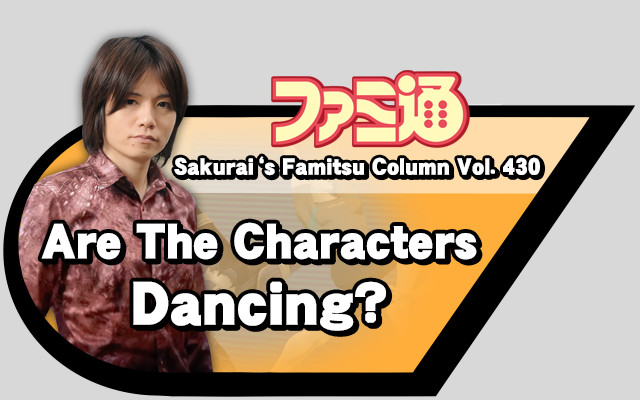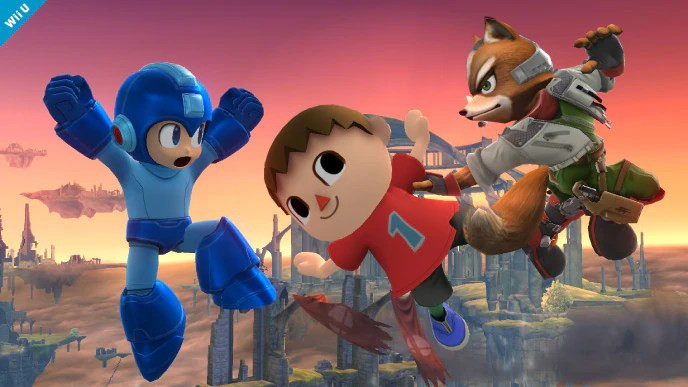 Sakurai-discussing-character-design-philosophy
Sakurai-discussing-character-design-philosophy
Amidst the post-E3 buzz, Masahiro Sakurai, the mastermind behind the Super Smash Bros. series, reflects on the newest character reveals for Super Smash Bros. for Nintendo 3DS and Wii U in his Famitsu column. Sleepy after the event’s first day, Sakurai delves into the thought process behind including unexpected fighters like Villager from Animal Crossing, Megaman, and Wii Fit Trainer, emphasizing a core concept he uses: envisioning each character as a “Dancing Character.”
The unveiling of Villager, Megaman, and Wii Fit Trainer sparked considerable questions, particularly regarding the latter two. Many questioned why these seemingly unconventional choices, especially Villager and Wii Fit Trainer, were selected for a fighting game. Sakurai acknowledges that even he initially doubted Villager’s fighting game potential during the development of Super Smash Bros. Brawl. However, he reveals a crucial element in his character selection process: “whether the image of the character in my head is dancing powerfully, or not. This is of the utmost importance.” This concept of a “dancing character” – a character whose essence and movements translate into a visually engaging and fluid fighting style – is paramount to Sakurai’s decisions. He clarifies that a character’s inherent fighting prowess is secondary to his ability to envision and embody their unique “dance” within the game. If he can imagine a character moving dynamically and distinctively, that character has a strong chance of making it into Smash Bros., regardless of their fighting game background.
 Megaman-in-Smash-Bros-battle-stance
Megaman-in-Smash-Bros-battle-stance
Considering Megaman, Sakurai explains that a conventional approach might have resulted in a standard punch-and-kick moveset, drawing parallels to his appearances in the Marvel vs. Capcom series. However, to truly capture the “embodiment” of Megaman as a “dancing character,” Sakurai focused on incorporating the iconic boss weapons that define the Megaman series. This decision aimed to move beyond generic fighting moves and instead translate Megaman’s unique gameplay identity into his Smash Bros. iteration.
Sakurai further elaborates on the meticulous process of embodying Megaman as a “dancing character.” The choice to retain Megaman’s NES-era visual style, complete with his signature blank expression, simultaneous walking and firing animation, distinct jump animations, and unique sound effects, all contribute to solidifying this envisioned “dance.” This detailed approach, however, is not merely about visual fidelity. It’s about balancing visual representation with gameplay, ensuring Megaman is not only recognizable but also fun and balanced within the Super Smash Bros. framework. Sakurai emphasizes that character creation is not simply about copying source material; it’s about establishing a foundational image of the “dancing character” that resonates within the Smash Bros. universe. This philosophy extends to characters like Villager and Wii Fit Trainer, and even to veterans like Fox and Captain Falcon, whose movesets require original interpretation due to their lack of fighting game origins, yet still need to embody their unique “dance.”
 Wii-Fit-Trainer-performing-yoga-pose-in-Smash-Bros
Wii-Fit-Trainer-performing-yoga-pose-in-Smash-Bros
For Sakurai, establishing a unified vision of a “dancing character” is critical, especially when working with a large development team. Without a clear initial image, individual developers might have conflicting interpretations, leading to inconsistencies. A strong, appealing, and clearly conveyed vision of the “dancing character” acts as a guiding principle, ensuring a smoother development process and a cohesive final product.
Reflecting on character choices from Fire Emblem: Awakening, Sakurai uses Chrom as an example of a character whose “dance” didn’t quite materialize. Despite conceptualizing a moveset for Chrom, Sakurai felt he became an uninspired amalgamation of Ike and Marth. In contrast, Robin, with the “sword and sorcery/magic” concept, immediately presented a clearer and more distinctive “dancing character” vision. This contrast highlights how crucial the “dancing character” concept is for Sakurai in differentiating characters and making them feel unique.
When asked about the speed of envisioning Robin and Lucina, Sakurai affirms it was relatively quick, especially for Wii Fit Trainer. Humorously, he admits that Wii Fit Trainer’s design process began with yoga poses as attack moves, directly translating her source material into a unique form of “dance.” An anecdote from E3 further underscores the surprise and initial skepticism surrounding Wii Fit Trainer’s reveal. The audience’s muted reaction to Wii Fit Trainer, followed by the reveal of Mario and Link, and the subsequent enthusiastic applause, showcases the unexpected nature of Sakurai’s character choices and his ability to find a unique “dance” even in seemingly unconventional characters. Sakurai’s commitment to finding this unique “dance” for each character ultimately shapes the diverse and memorable roster of the Super Smash Bros. series.

